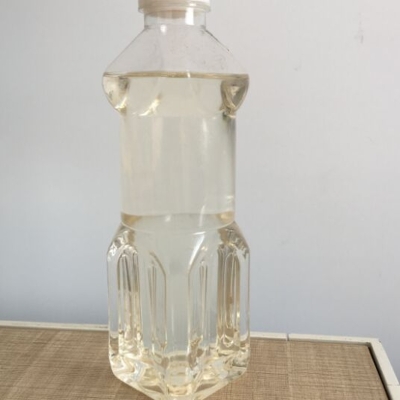-
Categories
-
Pharmaceutical Intermediates
-
Active Pharmaceutical Ingredients
-
Food Additives
- Industrial Coatings
- Agrochemicals
- Dyes and Pigments
- Surfactant
- Flavors and Fragrances
- Chemical Reagents
- Catalyst and Auxiliary
- Natural Products
- Inorganic Chemistry
-
Organic Chemistry
-
Biochemical Engineering
- Analytical Chemistry
-
Cosmetic Ingredient
- Water Treatment Chemical
-
Pharmaceutical Intermediates
Promotion
ECHEMI Mall
Wholesale
Weekly Price
Exhibition
News
-
Trade Service
Oil prices fell on Wednesday (Oct.
27) after industry data showed crude oil inventories rose more than expected and U.
S.
fuel inventories unexpectedly increased
last week.
The energy transition and the government's various net-zero plans have prompted analysts to predict that peak oil demand will occur
sooner than expected a few years ago.
Brent crude futures were down 1.
21%
at press time.
U.
S.
crude fell 1.
3 percent
.
Despite intraday declines, both remained near multi-year highs, after both major oil futures had risen for seven straight weeks as major producers dampened supply and demand rebounded
after pandemic restrictions eased.
API inventories grew more than expected, pandemic risks remained, and oil prices fell
Crude inventories rose by 2.
3 million barrels
in the week ended Oct.
22, according to the American Petroleum Institute's API data.
This exceeded expectations of 1.
9 million barrels
.
Gasoline inventories increased by 500,000 barrels and distillate inventories by 1 million barrels, compared to previous forecasts of
declines in both.
Analysts said oil prices began to show an overbought trend as crude oil prices have shown an upward trend
in the past ten weeks.
Craig Erlam, senior market analyst at OANDA, said: "Unless there is more positive news, Brent and U.
S.
crude could have some profit taking, which will be healthy
for the market.
"
Storage tanks at the West Texas Intermediate Oil (WTI) Oil Transfer Center in Cushing, Oklahoma, are depleted more than they have in the past three years, and long-term futures contract prices suggest supply will remain at this level for months
.
However, the global recovery from the pandemic has been shaky, which often raises questions
about the sustainability of oil prices.
Stephen Brennock of oil broker PVM said: "The global oil market is still at risk because the coronavirus and its variants have not been completely contained
.
The surge in cases this summer has weighed heavily on prices, and this could happen
again if the situation worsens.
”
Under the prospect of energy transition, oil supply has been poorly invested for a long time
However, as current oil and gas investment trends continue, chronic underinvestment in new oil supplies, and pressure on oil and gas companies to control emissions could cause global oil supply to peak earlier than global oil demand, which would create a supply gap, leading to increased volatility in the oil market and a structural increase
in oil prices.
Morgan Stanley Research wrote in a Reuters report this week: "On current trends, global oil supply could peak
sooner than demand.
" The problem with the market is that oil consumption has not peaked
.
Most estimates that it won't peak
until the end of the century at the earliest.
"
。
According to OPEC's latest annual outlook, the group expects global oil demand to continue to grow to 108 million bpd in the mid-3030s, after which it will remain flat
until 2045.
However, investment in new supply has lagged significantly behind the growth in
global oil demand.
The supply gap will approach in the coming years
On the other hand, outside the scope of the OPEC+ agreement, supply appears to be constrained
.
New investment fell to a 15-year low last year
.
According to Wood Mackenzie's estimate earlier this year, global upstream investment fell to $350 billion last year, the lowest level
in 15 years.
Although oil prices have already exceeded $80, investment is not expected to increase
significantly this year.
That's because super-oil majors are sticking to capital discipline and committing to net-zero targets, which some of them plan to achieve by restricting investment and developing non-core, barely profitable new oil projects
.
Given that oil demand will still grow, underinvestment in new supply will be a major problem
in the medium to long term, at least for the next few years.
Despite the energy transition, demand will not disappear, and new supplies will be needed in the coming years to replace declining production and reserves
.
OPEC said the oil industry will need significant investment over the next 25 years to meet demand
.
OPEC said the industry will need a cumulative $11.
8 trillion in long-term upstream, midstream and downstream oil-related investments
by 2045.
Patrick, chief executive of France's TotalEnergies, said: "If the oil industry stops investing in new supply, oil prices will soar to a peak by 2030, as some scenarios for net zero by 2050 indicate
.
If we stop investing in 2020, prices will face a spike
.
Even in developed countries, this is a big problem
.
”
On Wednesday (October 27), U.
S.
crude oil futures fell to give up gains in the previous session and are now trading above
$83.
On the month and day of Beijing time, the price of U.
S.
crude oil futures was 83.
44 US dollars / barrel
.







